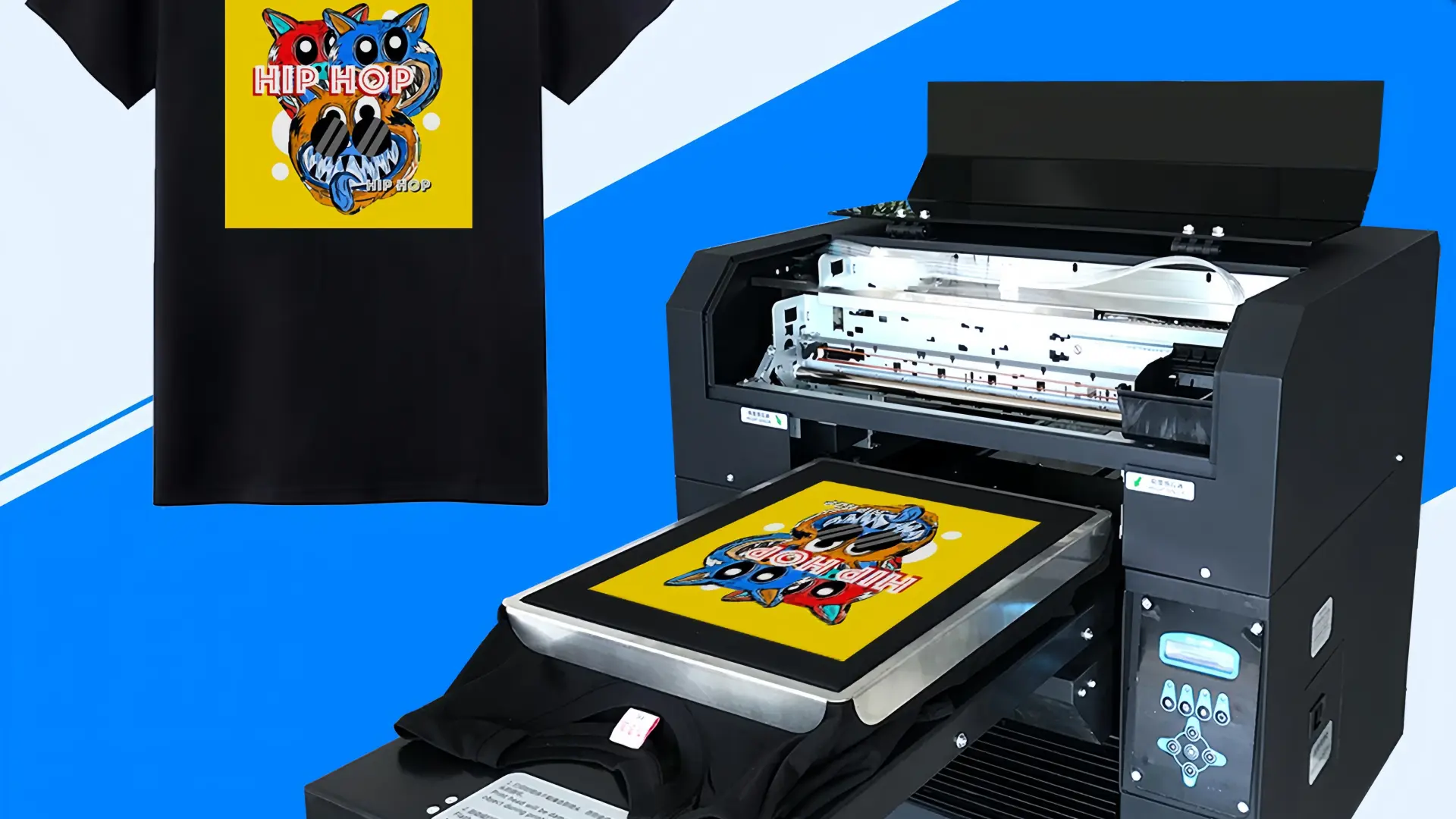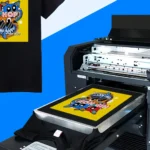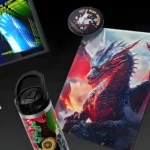In the custom t-shirt business, your equipment is your moneymaker. A high-quality t-shirt printer machine can cost tens of thousands of dollars, and its heart—the printhead—often carries a price tag of thousands alone. Surveys indicate that over 65% of printhead failures are caused by improper maintenance, rather than natural aging. Mastering scientific operation and maintenance can reduce t-shirt printer machine failure rates by 70% and easily extend your equipment’s lifespan by two years or more. This guide explores 7 golden rules for daily printer care, helping to make your entrepreneurial journey smoother and more cost-effective.
I. Printhead Maintenance: Protecting Your Most Valuable Component
As the most precise and fragile part of a t-shirt printer machine, a clogged or damaged printhead means costly repairs and lost business. Follow these critical strategies:
1. Maintain Daily “Work Rhythm” to Prevent Clogs
-
Science Behind It: Pigments and additives in textile ink settle and solidify when stagnant, blocking microscopic nozzles.
-
Pro Tip: Even without print jobs, run a “nozzle check” and “light cleaning” daily. Before extended downtime (>3 days), perform deep cleaning and install a printhead cap (with a moisturizing sponge).
-
Data Insight: Regularly powered-on printheads show 83% lower clog rates than idle ones.
2. Beware of Pre-Treatment Liquid: The Silent Killer
-
Risk Scenario: Printing dark shirts requires pre-treating the fabric with a high-adhesion primer to secure white ink—its stickiness threatens the printheads.
-
Critical Steps:
-
Control printhead height: Ensure ≥2mm clearance from treated fabric (check manual).
-
Clean the platform first: Remove residue or dust before each print.
-
Emergency response: If contact occurs, power off immediately! Dab (don’t wipe!) with a dedicated cleaner—never alcohol.
-
3. Dedicated Cleaner: The Gold Standard
-
Alcohol Danger: Industrial/medical alcohol erodes printhead seals, piezoelectric ceramics, and coatings.
-
Professional Choice: Use only manufacturer-recommended printhead cleaning fluid. Its mild formula dissolves ink crystals without damaging components.
-
Technique: Apply fluid to lint-free swabs and gently dab along nozzle rows. Never soak the printhead!
4. Premium Inks: Maximize Printhead Life
-
Cost Trap: Cheap inks contain impurities, coarse particles, and unstable formulas that cause clogs, leading to premature failure and higher long-term costs.
-
Quality Standards: Choose high-flow textile inks from reputable brands compatible with your printer. Premium inks deliver vibrant colors, strong wash fastness, and ultra-fine filtration to protect printheads.
-
Warning: Never mix ink brands or types (e.g., dye/pigment). Flush lines thoroughly when switching inks.
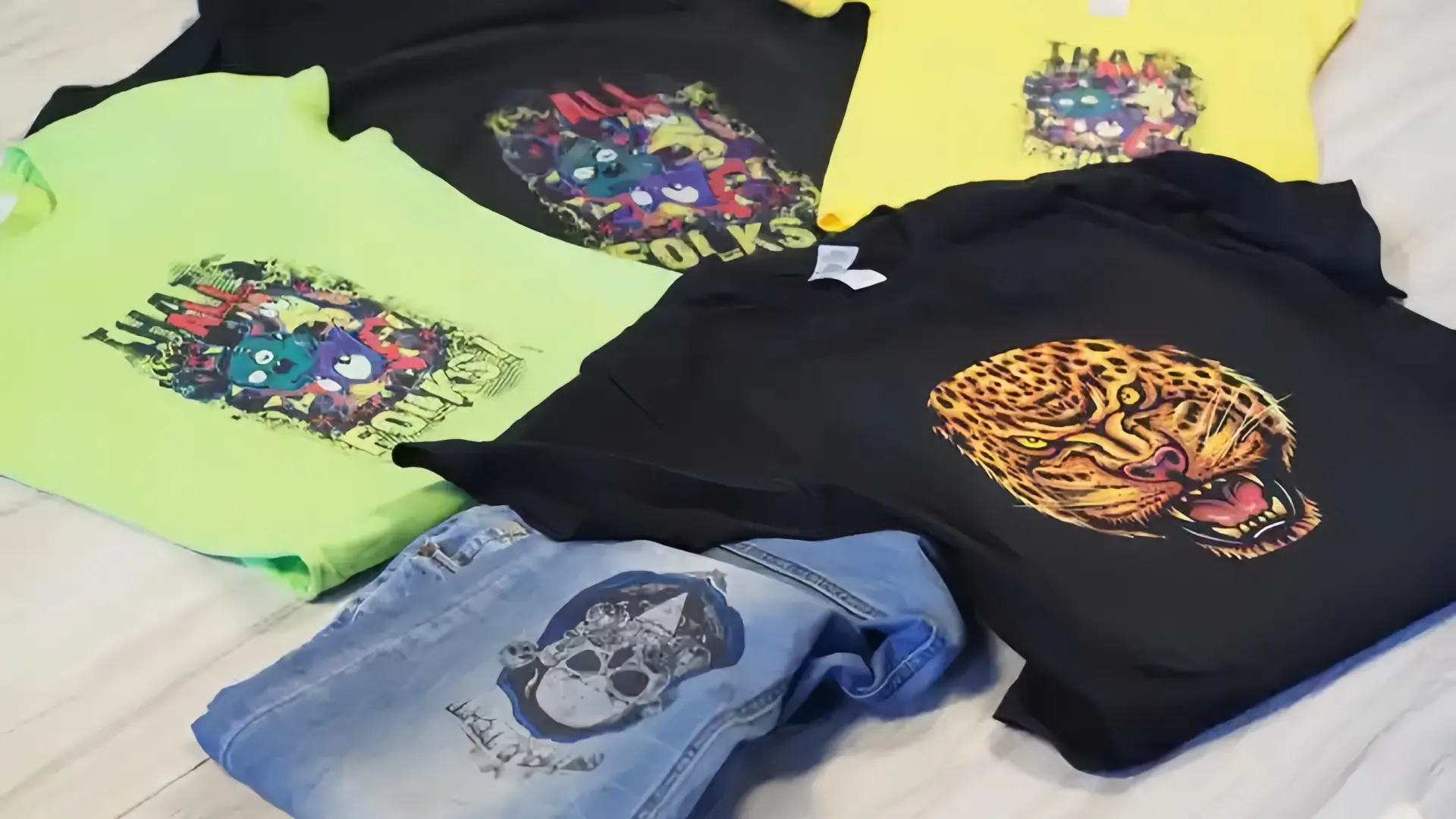
II. Mechanical System: Foundation for Reliability
5. Clean the Grating Strip: Your Machine’s “GPS”
-
-
Function: This optical ruler ensures precise printhead positioning. Dust or ink stains cause misalignment and errors.
-
Maintenance:
-
Clean weekly with a static-free microfiber cloth, moving unidirectionally.
-
No touch: Skin oils damage optical patterns—wear gloves.
-
Damage alert: Scratches or ink stains cause misprints, ghosting, or “Encoder Error” codes.
-
-
6. Check Platform Gears
-
Loose Gear Risk: Wobbly Y-axis gears cause blurred prints, layer misalignment, and color drift.
-
Monthly Check:
-
Power off → Test gear tension by hand (underneath/side of platform).
-
Tighten carefully: Use hex keys per manual—avoid over-tightening.
-
Clear debris: Remove thread, lint, or dried ink trapped in gears.
-
7. Lubricate Guide Rails Correctly
-
Friction Impact: Dry rails strain the carriage motor, causing stuttering, noise, or overheating.
-
Do’s and Don’ts:
-
Never use WD-40! It degrades lubricant and attracts dust.
-
Use primer-specific white silicone grease.
-
Procedure: Wipe rails clean → apply a thin grease layer → manually slide the carriage to distribute.
-
Frequency: Every 1–2 months (more often in dusty/humid workshops).
-

III. Advanced Maintenance Strategies
-
Environment Control: Stability is Key
Ideal: 20–28°C / 40–60% humidity. High humidity risks circuit shorts; low humidity increases static/clogs. Use an AC/dehumidifier/hygrometer. -
Stable Power Supply: Prevent Voltage Spikes
Connect to a high-quality UPS (uninterruptible power supply). Surges or outages fry motherboards, power supplies, or printhead drivers. -
Platform Leveling: Optimize Print Distance
Calibrate quarterly (or after moving the printer) using built-in functions or a feeler gauge. Uneven platforms cause ink splatter or head strikes. -
Maintenance Logbook
Track daily operations, errors, cleaning cycles, and part replacements. Data reveals failure patterns early.
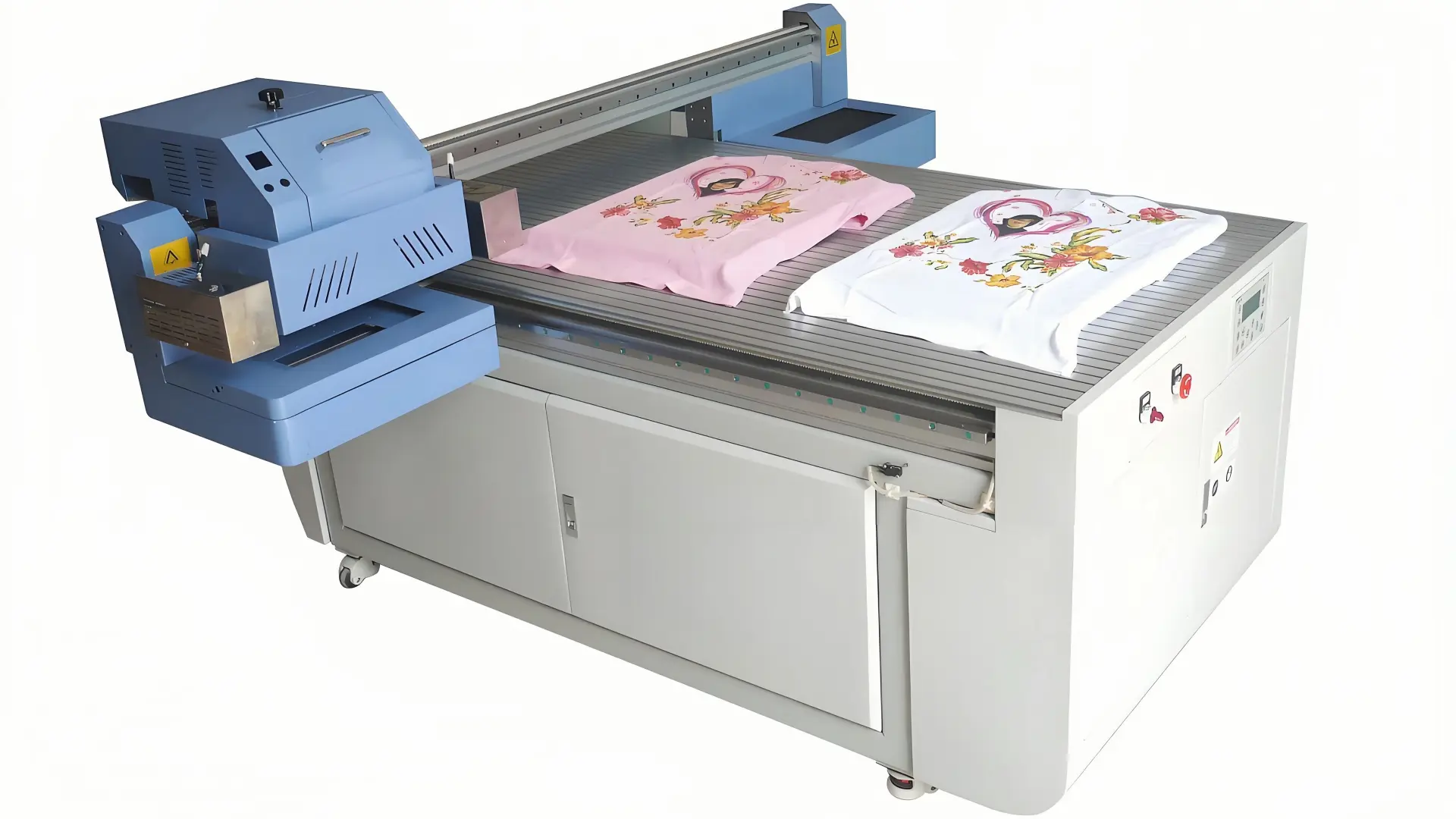
IV. T-Shirt Printer Machine Maintenance Schedule
| Task | Frequency | Key Steps | Tools/Supplies |
|---|---|---|---|
| Printhead Care | Daily | Nozzle check → test print → light clean if needed → secure head at shutdown | Cleaning fluid, lint-free cloth |
| Grating Strip Clean | Weekly | Power off → unidirectional wipe → inspect for damage | Microfiber cloth, gloves |
| Platen Clean | Pre-print | Remove fixative residue/dust → check for debris | Lint roller, low-suction vacuum |
| Rail Lubrication | Monthly | Wipe old grease → apply silicone grease → slide carriage | Silicone grease, cotton swabs |
| Gear/Belt Check | Monthly | Test gear tightness → inspect belt tension → clear obstructions | Hex keys, flashlight |
| External Dusting | Biweekly | Clean vents/fans/casing with an anti-static brush | Soft brush, compressed air |
| Ink System Flush | As needed | Run a “deep clean” cycle or manual flush (per manual) when changing inks | Cleaning cartridges, fluid |
| Platform Calibration | Quarterly | Execute built-in calibration or measure with a feeler gauge | Thickness gauge |
| Cable Inspection | Biannual | Check power/data cables for wear; ensure secure connections | — |
V. Building Operator Expertise: Standardized Training Systems
“Operators are the first line of defense” for your T-Shirt Printer Machine. Studies show that over 85% of equipment failures stem from operational errors, not mechanical defects. Implementing a structured training and certification system can slash maintenance costs by 40%:
-
Four-Tier Training Framework
-
Fundamental Knowledge: New operators must master machine mechanics (e.g., printhead technology, encoder strip positioning), consumable properties (ink/pre-treatment chemistry), and environmental requirements (20–28°C, 40–60% RH).
-
Standardized Operations: Hands-on apprenticeship focusing on critical routines:
-
Startup checks (nozzle test → platform cleaning → height calibration)
-
Dark garment protocols (pre-treatment spray distance, platform wiping techniques)
-
Emergency response (power-off procedure for printhead contamination or media jams).
-
-
Troubleshooting Skills: Train operators to decode error alerts (e.g., “Encoder Error,” “Head Overheat”) and perform basic fixes (cleaning encoder strips, lubricating rails).
-
Certification: Implement a “license-to-operate” policy requiring written (theory) and practical exams (ink replacement, platform leveling).
-
-
Visual Standard Operating Procedures (SOPs)
-
Convert critical workflows into short video demos and visual checklists posted near the T-Shirt Printer Machine. Examples:
-
Printhead Cleaning: Wear gloves → Apply special cleaning fluid → dab (unidirectional) → soak 60s → test print.
-
Pre-treatment Safety Rules: 2mm clearance from garment / clean platform / secure printhead before spraying.
-
-
Mandate Maintenance Logbooks to record daily actions, anomalies, and personnel accountability.
-
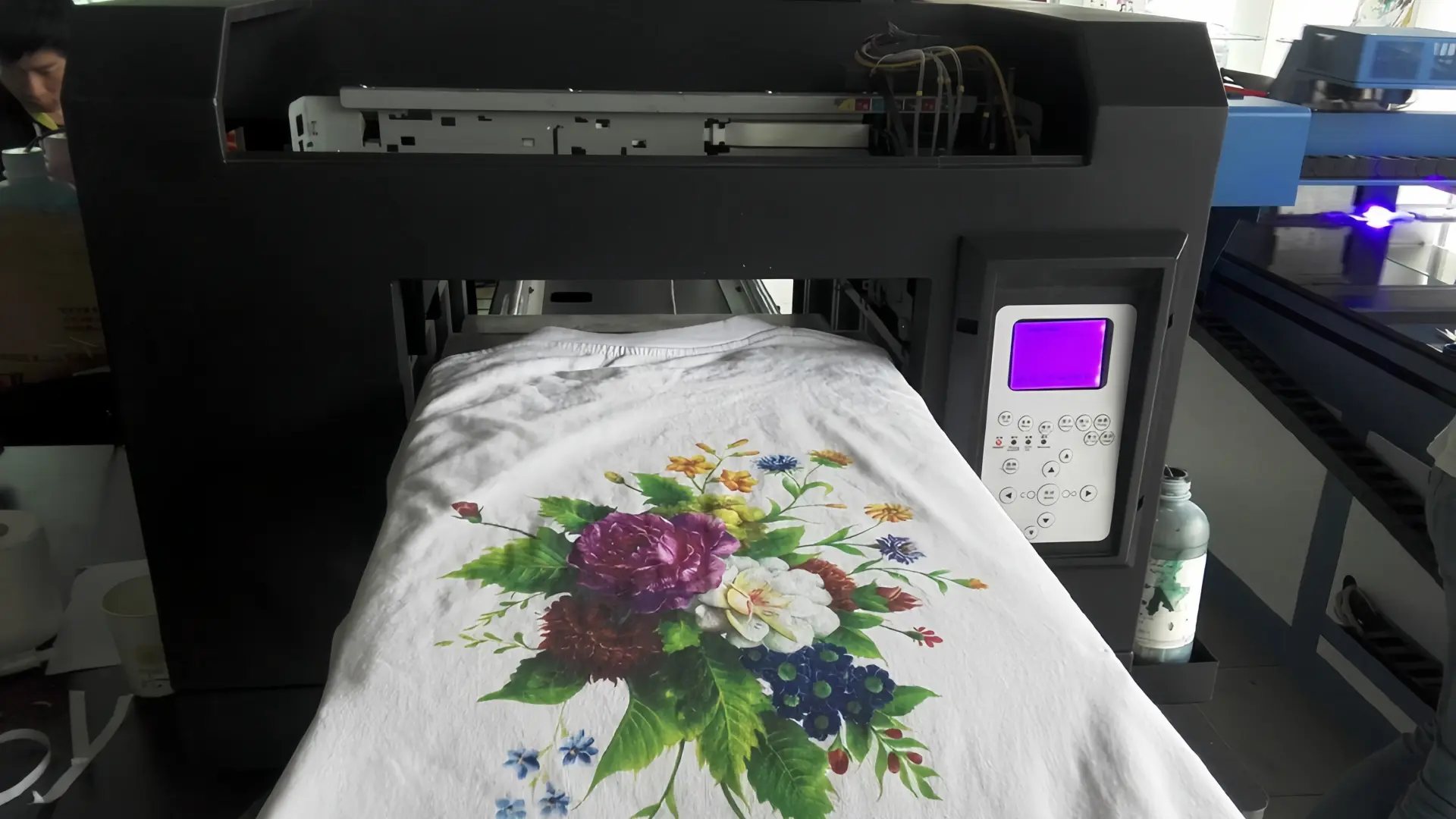
VI. Cost Analysis: Life Cycle Economics of T-Shirt Printer Machine
Many entrepreneurs prioritize “low-cost consumables” but overlook hidden cost traps. The true expense of a T-Shirt Printer Machine = Purchase Price + (Consumables + Maintenance + Downtime Losses) × Service Life:
1. The Consumables Trap
-
-
Low-cost ink’s true impact: A brand offering 30% cheaper ink caused:
-
Additional consumption of 200 ml cleaning solution per month (200ml/month, $22)
-
40% shorter printhead life ($1,150 printhead lasting 6 months vs. 12+ months)
-
68% higher total cost per print vs. premium ink.
-
-
Key metric: Always calculate “comprehensive cost per milliliter printed” (ink + associated wastage).
-
2. The Domino Effect of Downtime
When a T-Shirt Printer Machine halts production:
-
-
Direct loss: Daily output drops to zero (USD 440/day at 30 shirts/hour).
-
Hidden costs: Client trust erosion, idle labor, rush repair fees ($70/hour).
-
Repair bills: Technician dispatch ($70 +) + parts (e.g., $40 encoder strip).
-
One lubrication neglect incident causing carriage jam = 2-day stoppage → ≥$1,000 loss.
-
-
Longevity ROI: The Power of Proactive Care
For a $7,200 T-Shirt Printer Machine:-
Extending lifespan from 3 → 5 years cuts annual depreciation from $2,400 → USD 1,440.
-
Avoiding major repairs (e.g., $430 USD mainboard replacement) saves ≥$1,700 over 5 years.
-
Total savings: ≥$5,000 — reclaiming 70% of the machine’s value!
-
Action Tool: Track expenses via a Life Cycle Cost Tracker. If monthly maintenance exceeds depreciation, trigger a full audit.
Your t-shirt printer machine is a long-term partner in your entrepreneurial journey. Every drop of specialized grease, every gentle wipe of the grating strip, and every calibrated millimeter prolongs its service life. Behind that $1,000 printhead lies your commitment to quality, and mastering these 7 rules is your ultimate shield against downtime.
On the other hand, your T-shirt printer machine isn’t just a tool—it’s your brand’s quality guardian. Every precise head adjustment protects print clarity; every drop of silicone grease defends on-time delivery; every detailed logbook builds competitive moats.
While rivals race to the bottom on price, winners master equipment excellence: Cut errors via training, kill waste via cost analysis. Remember: Machines don’t lie—they mirror your professionalism in stability and profit.
“The most expensive machine is the one never maintained.” Embed this mindset in your team today. As competitors scramble through breakdowns, your workshop hums, printing the future—one shirt at a time.
When you want to learn more about the t-shirt printer machine, you can check here. I hope it will be helpful to you: A Comprehensive Guide to T-Shirt Printing Machines

